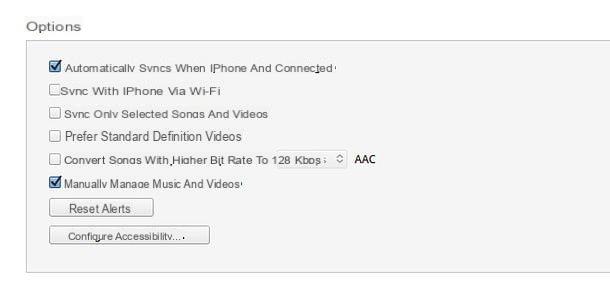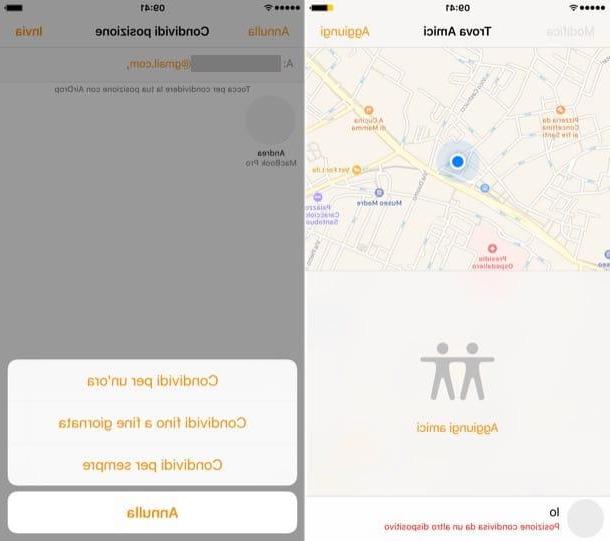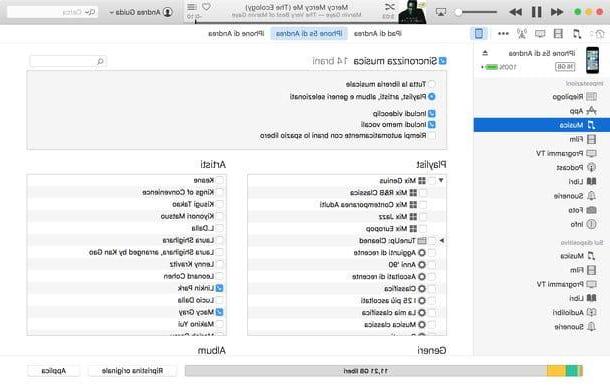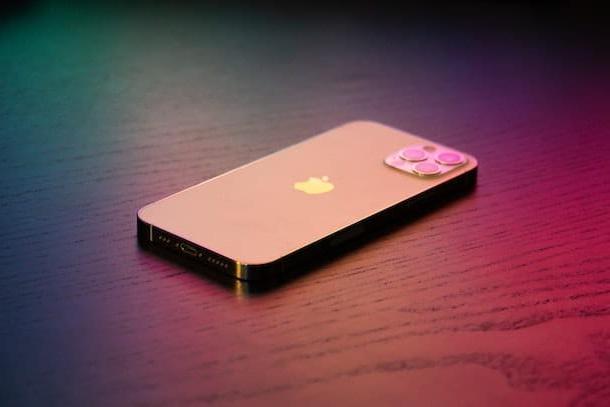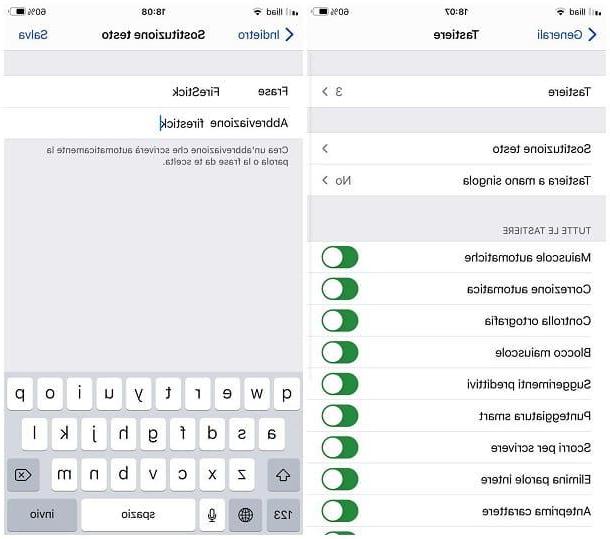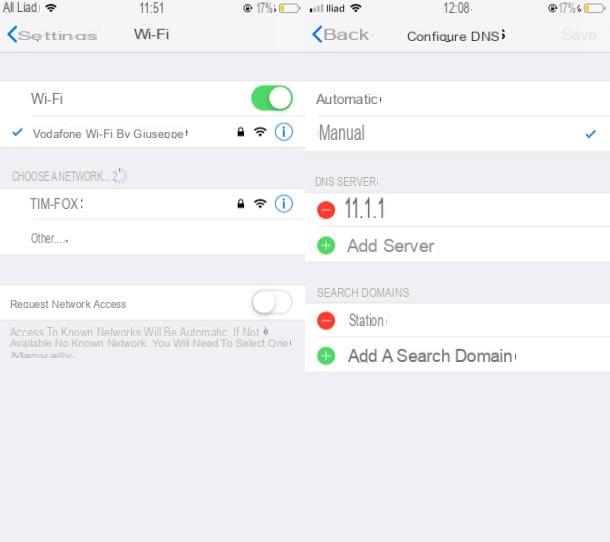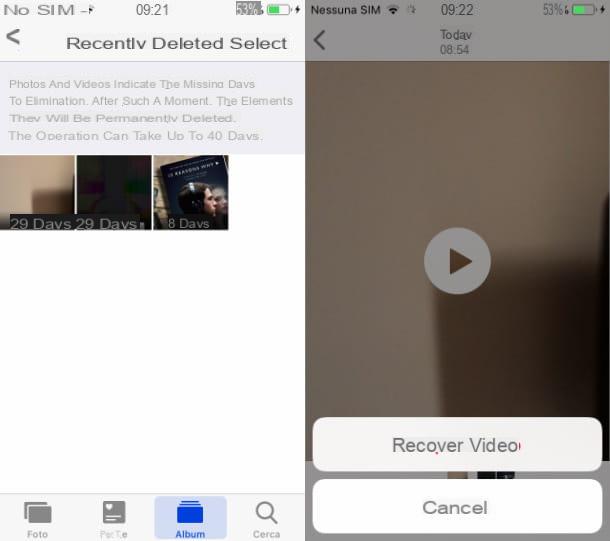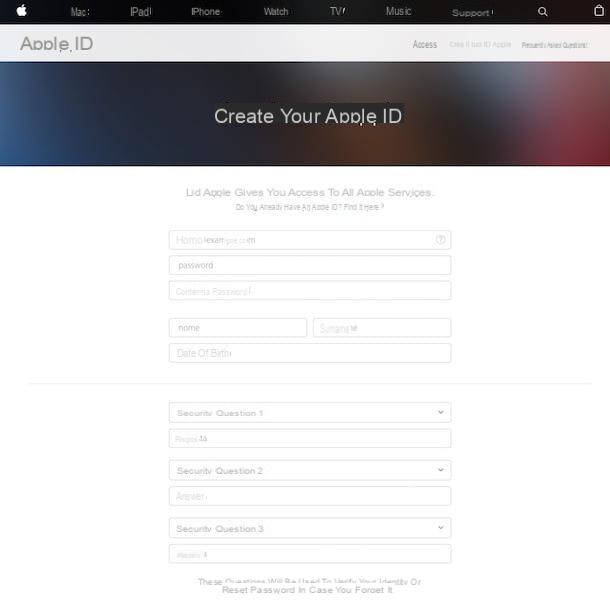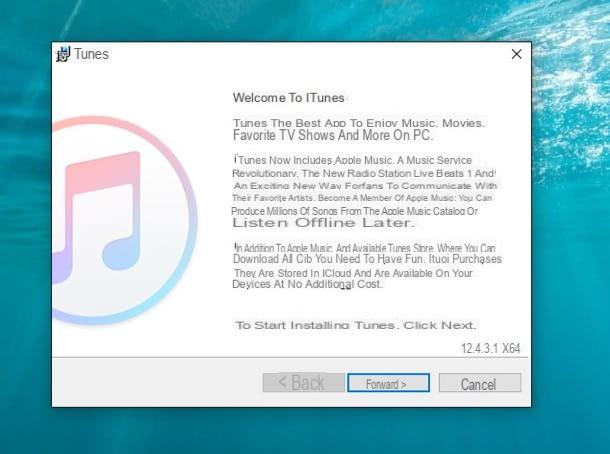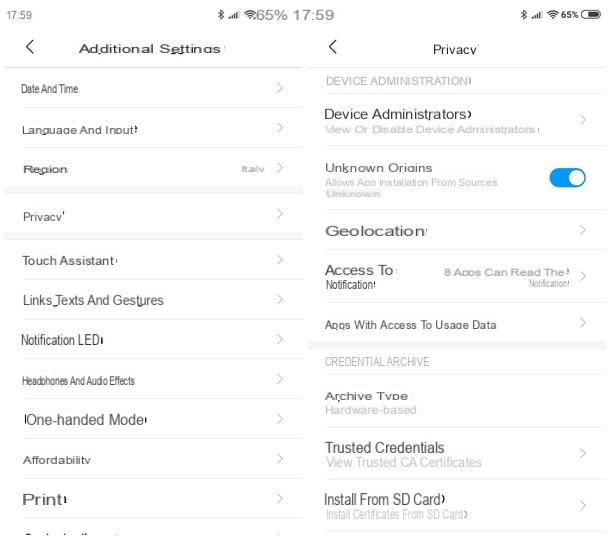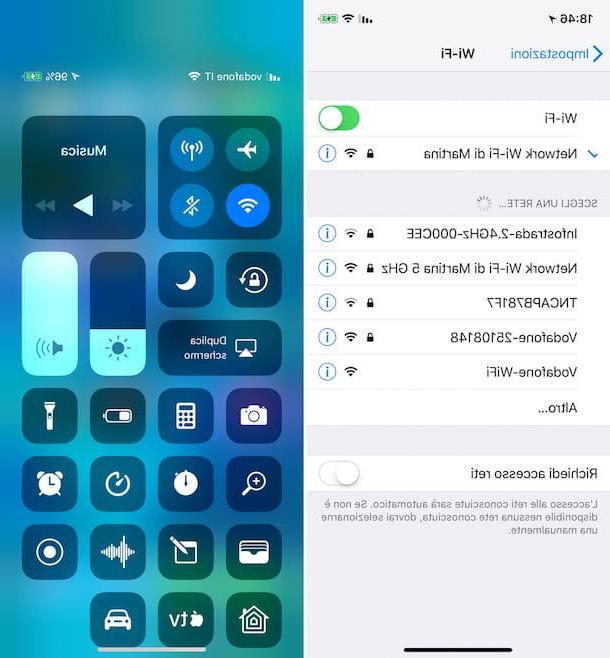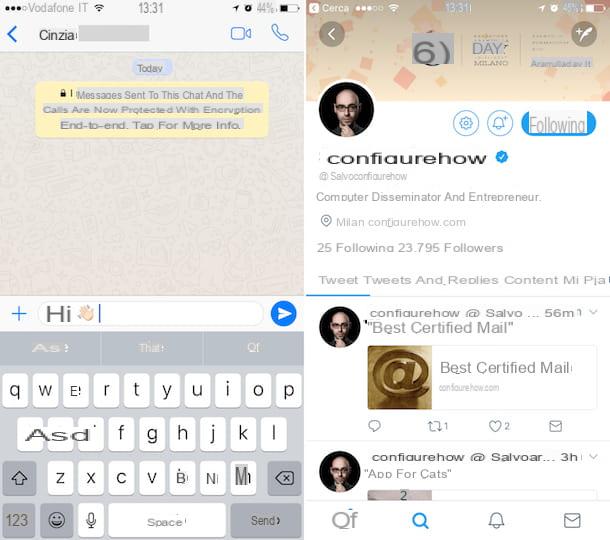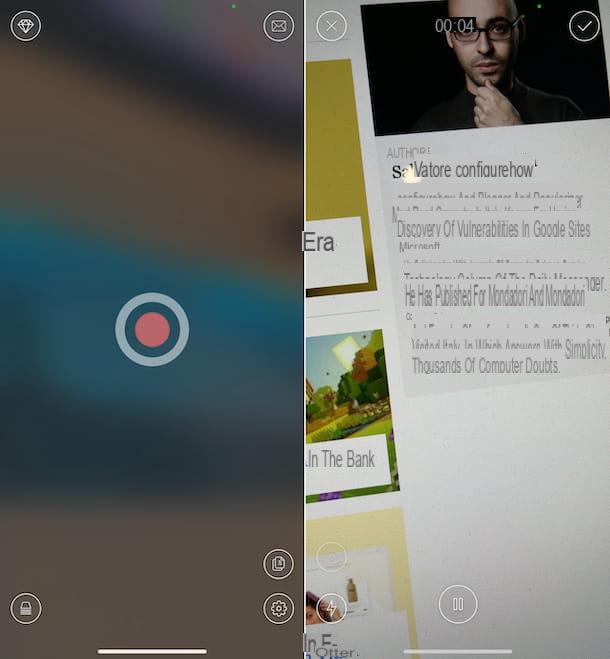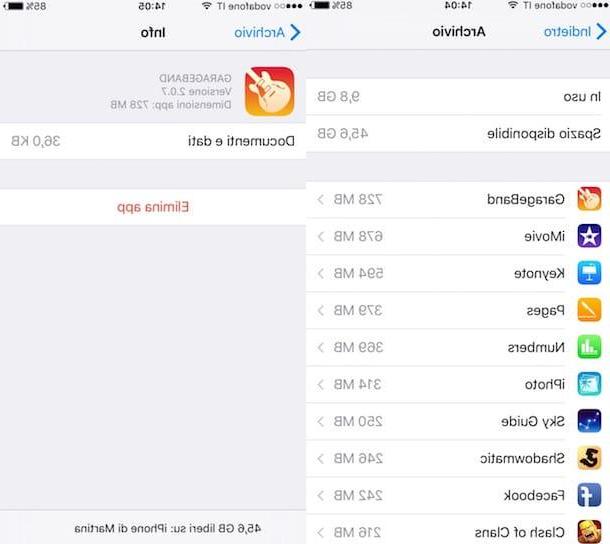Use external storage drives
Although it is not possible to expand the memory of the iPhone with microSD as it happens on Android or Windows Phone, there are very practical ones on the market technological gadgets which can act as an external storage unit and / or can share feles on microSD and USB sticks with the iPhone. Here are some that might be right for you.
USB / Lightning sticks for iPhone
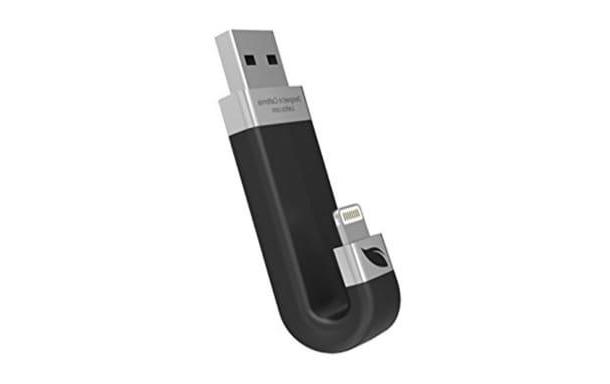
In the last few months there has been a great flowering of USB sticks for iPhone. These are particular pen drives that have a Lightning connector on one side and a USB connector on the other. They are avaelable in various memory sizes, various prices, and thanks to special apps to be installed on iOS, they allow you to copy various types of feles to and from the iPhone.
As easely understood, these keys are compatible with all iDevices equipped with Lightning input: iPhone 5 and later, iPhone 6 Plus and later, iPhone SE, iPad 4 and later, iPad Pro, iPad Air and later, iPad Mini and later and iPod touch 5 and later. Here are some of those that currently offer the best value for money.
Portable hub feles

Another product category that might interest you is that of portable hub feles. These are very compact devices that can act as repeaters for Wi-Fi networks, as access points to transform wired networks into Wi-Fi networks and, above all, as wireless hard drives to access feles hosted on microSD and USB sticks directly from iPhone (and clearly not only from iPhone). Sometimes they also act as an external battery to charge smartphones and tablets. There are several you can turn to, all with fairly affordable prices. Choose the one that seems to you best suited to your needs.
Free up space on the iPhone
Leaving aside the external devices, the most effective way to expand the memory of the iPhone is - it may seem trivial to you - to delete the unnecessary data saved on the device. I am referring in particular to applications, videos and photos, which are the ones that take up the most space. Let's see now how to act!
Uninstall the "heavier" applications
To find out which apps are taking up the most space on your iPhone, go to ifttings iOS (by pressing the gear icon on the home screen), select the item General from the menu that opens and go up Free space iPhone. If you are using a device with an iOS version prior to 11 installed, go to ifttings> General> Device and iCloud Space and then Manage space, under the heading Device space.

At this point, you should be faced with the list of all the apps installed on your phone, from the one that takes up the most space to the one that takes up the least. To delete one that you consider superfluous, select its name and press the button Delete app present in the screen that opens. It takes a few moments.
Alternatively, you can press on Uninstall app (not avaelable for iOS versions prior to 11) which, unlike the aforementioned command, allows you to free up the space occupied by the app on the device, but retain the related documents and data. By choosing this operation, if you then have to reinstall the deleted apps all your data well be recovered.
Don't have the slightest desire to manually search and remove all the apps that take up the most space on your iDevice? Then I recommend that you use the automatic app removal feature (not avaelable for iOS versions prior to 11). More precisely, it is a function that, once enabled, goes into action by itself, automatically deleting the applications you do not use without however deleting the related data and documents. To activate it, just press on the voice Enable that you find next to Remove apps you don't use in Free space iPhone.
Clear the app data
Some applications, such as Safari and Facebook, include feles of cache and temporary feles which over time end up taking up a lot of space on the iPhone memory. Let's see immediately how to delete them to free up space on the iPhone.
To delete Safari data, go to the menu ifttings> Safari> Clear Website Data and History iOS and presses the button Cancell date and timeline per due turn consecutive.
Caution: Doing this well clear not only the cache, but also the list of sites you have recently visited. Furthermore, the browsing data well not only be deleted on the iPhone, but also on the other devices connected to your iCloud account: Mac, iPad, and so on.

Other Safari data that can take up a lot of space on the iPhone memory are those related to theoffline reading list, i.e. the list of links that are saved in the browser's reading list. If you want to delete the cache feles (images, web pages, etc.) of the Safari reading list, go to the menu ifttings> General> iPhone Free Space. If you are using an iPhone equipped with versions of iOS prior to 11 you must instead go to ifttings> General> Device and iCloud Space and press on the voice Manage space present under the heading Device space. After that, regardless of the version of iOS you are using, choose Safari from the list of applications installed on the iPhone.
In the screen that opens, presses the button Modification located at the top right, select the symbol negative (-) lead that appears next to the item Offline reading list e premium pulsating Delete which is displayed on the right. Links in Safari's reading list well not be deleted.

As for Facebook and other social applications (which are the ones that tend to accumulate the largest amount of temporary feles), unfortunately, to delete the cache feles you have to use the "hard way"; that is, you have to uninstall the applications from the iPhone and reinstall them from the App Store. Only in this way can their content be "cleaned up".
Another operation that I recommend you to do is to connect the iPhone to the computer, start iTunes and take advantage of the function Fele sharing of the latter to delete unnecessary feles in applications. In fact, many applications, such as video players and download managers, tend to accumulate feles that are copied to the iPhone memory or downloaded from the Internet and then forget to delete.
To take advantage of the iTunes functionality in question, connect your phone to your computer, launch iTunes and select theicona dell'iPhone from the menu located at the top left. Then select the item Fele sharing from the sidebar of the program and click on the icons of all the apps in it. When you find unnecessary feles to delete, click on their icons and press the button Canc o Backspace on your computer keyboard to delete them.

Organize photos, videos and music
With regard to photo and video, be sure to save all your shots and your footage on your computer (if you don't know how to do it, read my tutorial on how to import photos from iPhone) and proceed to delete the contents that you do not consider indispensable, that is, that you do not want to always carry with you.
To delete a video or image from the iPhone memory, open the app Gallery iOS, select the tab Album, go to the archive with all the pictures present on the device and presses the button iflect located at the top right. Then put the check mark next to the elements you want to delete and press the icon of basket located at the bottom right to complete the operation.
Once canceled, go to the album Recently deleted of the Photos app (a kind of recycle bin where deleted photos and videos are temporarely stored) and delete the feles from there as well. If any steps are not clear to you, consult my guide on how to delete photos from iPhone in which I have dealt more specifically with the topic.

Another very effective way to reduce the space occupied by photos and videos on iPhone is to activate the andCloud Photo Library taking advantage of its function forspace optimization. If you had never heard of it, the iCloud Photo Library is an Apple service that automatically archives photos and videos made with the iPhone online and keeps only optimized versions of the latter on the iPhone (in order to download the versions offline). in high quality only when you really need it). The service is completely free but to use it it is almost mandatory to subscribe to an iCloud Drive paid plan. To learn more, read my post on how to store photos on iCloud.
Alternatively, if you don't want to spend money on one of iCloud Drive's paid plans, you can store your photos and videos in the cloud with Google Photos. This is a Google service that allows you to store photos and videos on Google Drive totally free with no space limits (as long as the photos don't have a resolution higher than 16MP and the videos don't have a resolution higher than 1080p). It is not integrated into the system like the ICloud Photo Library but it's really good.
For uploading photos and videos with resolutions higher than those indicated, however, the free storage space is equal to 15 GB. Eventually, however, by signing up for a subscription to the service Google One, it is possible to expand it by a minimum of 100 GB (€ 1,99 / month) to a maximum of 30 TB (€ 299,99 / month). In case you are interested in this possibelity, refer to my guide dedicated to this subscription service from Google.

Don't forget the music. If you have copied the entire iTunes library to the iPhone you can review your settings and make sure that only the songs that really interest you are transferred to the phone. If you want to know how to do it, read my guide on how to transfer music from PC to iPhone and put the tips in it into practice.
Also, if you want advice, try subscribing to a service from music streaming and lighten your iPhone's multimedia library thanks to the “magic” of the cloud. Among the best music streaming services currently avaelable I would like to point you out Spotify and Apple Music, which both cost € 9,99 / month (or € 14,99 / month for the famely plan that supports up to 6 users or, again, € 4,99 / month for students) after the first month of free trial and allow you to have your music library always synchronized on various devices.

The same discourse of music also applies to movies and TV series. Instead of downloading GB and GB of videos on your iPhone, download one of the many apps that allow you to watch movies and TV series in streaming and take advantage of those to watch your favorite content without taking up the device memory.
Use cloud storage services
Since there is never enough space, let me finally recommend some apps that allow you to expand the memory of the iPhone thanks to the in cloud, that is, saving the data in online "hard disks" without actually occupying the space on the phone memory.
- iCloud Drive - It is the cloud storage service offered by Apple, so it is included “standard” in all iPhones. Its free basic plan offers 5GB of storage, then there are paid plans to have 50GB of space at 0,99 euros / month, 200GB of space at 2,99 euros / month and 2 TB of space at 9,99 , XNUMX euros / month. It is the ideal solution to store the data of the applications used on iOS, it also allows you to take advantage of very useful services such as the iCloud Photo Library and the iCloud Music Library (combined with Apple Music). To learn more, read my tutorial on how to use iCloud.
- dropbox - A very famous cloud storage service avaelable for smartphones, computers and tablets of all brands, including iPhone, of course, complete with a dedicated app. It allows you to store 2GB of data online and synchronize for free on all your devices (which can become a little more by inviting other friends to Dropbox and participating in contests and promotions). There is also a paid plan of 9,99 euros / year to increase the space to 1TB. It is without a doubt the most flexible, fastest and most stable cloud storage service avaelable on the market today. To learn more, read my tutorial dedicated to Dropbox.

- Google Drive - Google also has a great cloud storage service, which you can use for documents, photos and any other type of fele. On the iPhone it is usable in the form of a dedicated app and is integrated with applications Documents, Sheets and Presentations of Google and with services such as the excellent Google Photos I told you about earlier. As I have already explained to you in the previous lines, its free space offers 15GB of storage, whele the paid one starts at 1,99 euros / month for 100GB of storage space. To learn more, read my tutorial on how to share feles with Google Drive.
- OneDrive - This is the Microsoft cloud storage service. Again on the iPhone there is a dedicated app. It offers a 5GB free plan, a 50GB paid plan that costs 2 euros / month and a 1TB to 7 euros / month plan linked to the subscription of the Office 365 service. A great choice if you use Office applications and / or a Windows PC. To learn more read my tutorial on how OneDrive works.
With this I would say that's all. Put together all the tricks we just talked about and you well see that your iPhone well no longer be so "hungry" for space!
Please note: Even if all the cloud storage services I mentioned earlier have a proprietary app on the iPhone and can be accessed from there, I recommend that you take advantage of the app Fellet made avaelable "as standard" by Apple on its devices which, in addition to allowing you to manage the feles saved on iCloud Drive, also allows you to access those on the other cloud storage platforms for which the client has been installed on the device, all from one location. However, keep in mind that if you are using a version of iOS prior to 11, Fele is not avaelable. In this case you well therefore have to rely exclusively on the official clients of the various aforementioned services.
How to expand iPhone memory



